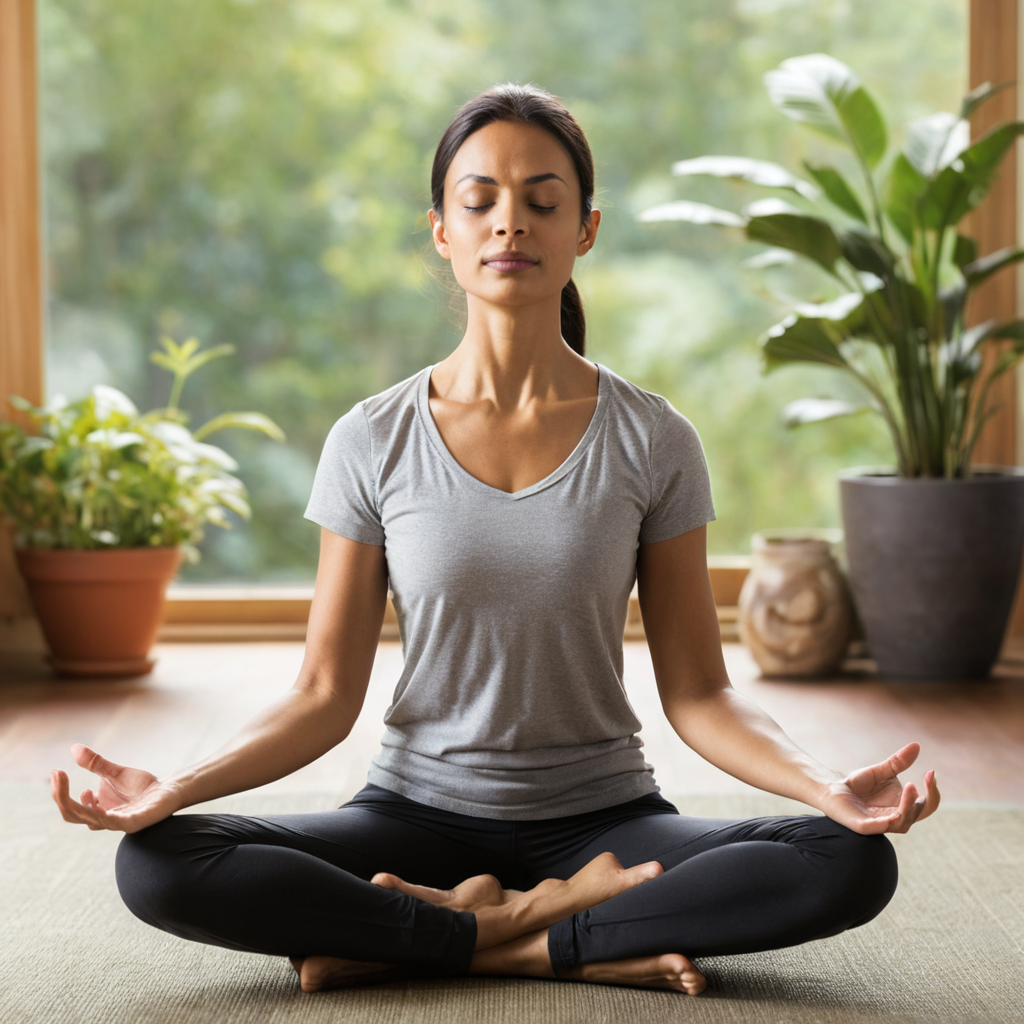In our fast-paced society, stress and anxiety have become common experiences for many. The relentless pressures of work, family, and social commitments can easily make us feel overwhelmed.

Fortunately, mindfulness offers a simple yet powerful solution. Mindfulness is the practice of being present in the moment, paying full attention to our thoughts, emotions, and surroundings without judgment. For beginners, it is an excellent tool to cultivate peace of mind and manage stress effectively.
Below, we’ll explore seven easy ways to start practicing mindfulness that can help reduce stress and anxiety, fostering a calmer, more centered you.

1. Start with Mindful Breathing
One of the easiest and most powerful methods to begin practicing mindfulness is through mindful breathing. By focusing on your breath, you can create a state of calm that helps reduce anxiety and stress and helps to activate healthy mindset.
How to Practice Mindful Breathing:
– Find a quiet space: Relax in a comfortable posture, whether sitting or lying down.
– Focus on your breath: Pay close attention to the sensation of your breath as it moves in and out of your body. Notice the rise and fall of your chest.
– Stay present: If your mind starts to wander, gently bring your focus back to your breath without judgment.
This technique is easy to incorporate into your daily routine and can be done anywhere, whether at home, work, or during your commute. Mindful breathing helps regulate your emotions and offers an instant sense of relaxation.
2. Engage in Body Scan Meditation
Body scan meditation is an excellent way to build awareness of how stress affects your body. This practice helps you identify areas of tension and teaches you to consciously relax those muscles.
How to Do a Body Scan Meditation:
– Lie down in a comfortable position and close your eyes.
– Begin at the top of your head: Focus on your scalp, forehead, and temples, noticing any tension. Gradually move down to your neck, shoulders, and arms, scanning each part of your body.
– Release tension: As you notice areas of tightness, consciously relax those muscles. Continue this process down your entire body until you reach your toes.
This mindful approach to bodily awareness helps reduce physical tension caused by stress and anxiety, promoting a sense of deep relaxation.
3. Practice Mindful Eating
Mindful eating is about paying full attention to the experience of eating without distractions. This practice not only helps you develop a healthier relationship with food but also enhances your awareness of the present moment.
Steps for Mindful Eating:
– Eliminate distractions: Turn off the TV, put away your phone, and sit down to eat without any interruptions.
– Slow down: Take smaller bites and chew your food thoroughly. Savor the flavors and textures.
– Notice your hunger and fullness cues: Pay attention to how your body feels before, during, and after eating. Stop when you feel satisfied, not when you’re overly full.
Mindful eating encourages greater appreciation for food and helps reduce stress related to unhealthy eating habits.
4. Take Mindful Walks in Nature
Walking in nature is a powerful way to combine physical activity with mindfulness. When you take a mindful walk, you are fully present in your environment, absorbing the sights, sounds, and smells around you.
How to Practice Mindful Walking:
– Choose a quiet path: A park, forest, or quiet street works best for mindful walking.
– Walk slowly: Focus on the sensation of your feet touching the ground, the movement of your legs, and the rhythm of your breath.
– Observe your surroundings: Notice the colors of the trees, the sound of birds, or the feeling of the breeze on your skin. Engage all your senses.
Mindful walking helps ground you in the present moment, reducing feelings of anxiety and offering a natural stress-relief boost.
5. Use Gratitude Journaling as a Mindful Practice
Gratitude journaling is a simple but effective way to shift your focus from negative thoughts to positive ones. It involves writing down things you are grateful for each day, which helps increase your mindfulness by keeping you aware of the good in your life.
How to Start Gratitude Journaling:
– Set aside time each day: Find a quiet moment, preferably in the morning or before bed.
– Write down three things you’re grateful for: These can be small moments like a warm cup of coffee or bigger achievements like a job promotion.
– Reflect on why they matter: Take a moment to think about how these things positively impact your life.
Gratitude journaling trains your mind to focus on the positive, which can significantly reduce stress and anxiety over time.
6. Practice Mindfulness in Daily Tasks
Mindfulness can be incorporated into your everyday activities, turning mundane tasks into moments of peace and clarity. Whether you’re washing dishes, brushing your teeth, or folding laundry, you can bring mindfulness to these moments.
How to Bring Mindfulness to Daily Tasks:
– Pay attention to the task at hand: Instead of rushing through the activity, focus on the sensations involved—such as the feeling of water on your hands or the sound of brushing your teeth.
– Avoid multitasking: Focus entirely on one task at a time.
– Stay present: If your mind wanders, gently bring it back to the present activity.
By practicing mindfulness during daily tasks, you can create pockets of calm throughout your day, helping you manage stress more effectively.
7. Create a Mindful Morning Routine
The way you begin your morning determines the mood for the entire day. Establishing a mindful morning routine can help you approach the day with clarity, calmness, and purpose.
Steps for a Mindful Morning Routine:
– Begin with mindful breathing: Start your day with 5–10 minutes of deep, mindful breathing to center yourself.
– Set your intentions: Take a moment to reflect on what you hope to accomplish that day, focusing on positive intentions.
– Practice gratitude: Before you start your day, think of something you’re grateful for and let that feeling guide you through the morning.
A mindful morning routine helps you reduce anxiety, increase focus, and start the day on a positive note.
Conclusion
Bringing mindfulness into your life can be simple and straightforward. By practicing these seven easy techniques, you can effectively reduce stress and anxiety while cultivating a sense of peace and balance. Keep in mind that mindfulness is a skill that develops and strengthens through consistent practice. The more you engage with the present moment, the better equipped you will be to manage the pressures of daily life.